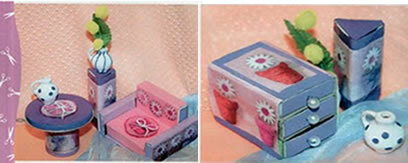Many people think that when they go to fill their car at the gas station, when choosing ethanol or gasoline, they are using pure gasoline or alcohol. In fact, we always buy mixtures, being them:
If ethanol: mixture formed by ethanol and water;
Gasoline: mixture formed by gasoline and ethanol.
It is very common to appear on the radio, television or internet that a certain station sold adulterated fuel to a customer and that this caused damage to the car. It could be that in ethanol the amount of water was greater than what is allowed by law or that the amount of ethanol in the Gasoline was larger than allowed.
Brazilian legislation determines the alcohol content that must be present in gasoline (any type) and the water content of ethanol. Currently, the permitted contents are:
For regular gasoline: 27% anhydrous ethanol
For gasoline with additives: 27% anhydrous ethanol
for gasoline premium: 25% anhydrous ethanol
For Ethanol: 4% water
Is it possible for anyone to identify whether or not the fuel they are buying is tampered with? Is it possible to quickly and simply determine the amount of ethanol in gasoline? The answer to both questions is yes!
Let's learn now how we can determine the amount of alcohol in regular gasoline. Follow:
a) Materials needed
150 ml beaker

Beaker or container with 50 mL of distilled water (found at any pharmacy)

5 grams of NaCl (sodium chloride / table salt)
A beaker with 50 mL of regular gasoline (purchased at any gas station)
disposable mask

A pair of disposable gloves

b) Precautions
Perform the procedure in a place with good air circulation;
The mask should be used because gasoline is a volatile liquid (evaporates under the influence of ambient heat), and its vapors are toxic;
The glove will be used to avoid direct contact with the substances used;
Perform the procedure under the supervision and assistance of an adult;
Do not perform the experiment near a heat source.
c) Procedure to be performed
1st Step: add all the sodium chloride to the beaker with distilled water;
2O Step: add all the gasoline inside the beaker, up to the 50 mL mark;

3rd Step: add all the distilled water with NaCl to the beaker containing gasoline.

Step 4: Cover the beaker with your hand (using the glove) and turn it upside down at least 10 times;
5th Step: wait about 15 minutes;
6th Step: Observe the amount of gasoline present in the beaker after mixing.

d) Explanation
When we add the water and NaCl mixture to gasoline, all the ethanol that was dissolved in the gasoline is attracted to the added mixture. This happens because ethanol is a polar substance and the mixture of water and NaCl also has a polar character (similar attracts similar).
During the process, The gasoline undergoes decantation and stays on the water and NaCl mixture as it has a lower density.
Analyzing the beaker with the mixture of gasoline, water and NaCl, we observe that the water goes up to the 65 mL mark, as we only added 50 of it we concluded that she received 15 mL of ethanol from gasoline. Gasoline, on the other hand, starts its volume at 65 mL and goes up to 100 mL, that is, it has a volume of 35 mL.

Knowing the volume of gasoline that was purchased at the gas station and the volume of ethanol it presents, we can calculate the percentage of ethanol using a rule of three:
50 mL, which was the whole (acquired gasoline), stands for 100%, as the volume of ethanol (15 mL) stands for x:
50 mL...100%
15 mL...x
Multiplying cross:
50. x = 15. 100
50x = 1500
x = 1500
50
x = 30%
As gasoline had 30% dissolved ethanol, it is an adulterated product, since the limit allowed by legislation is 27%.


